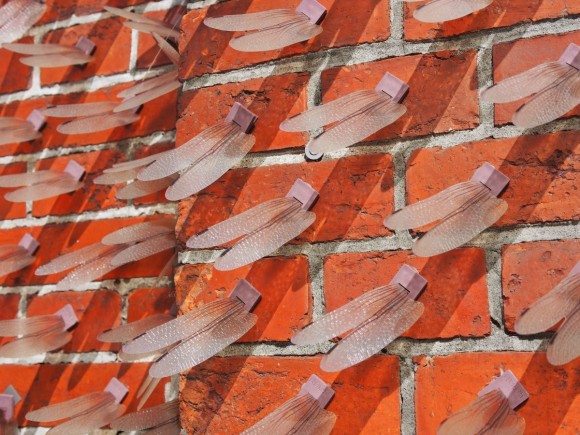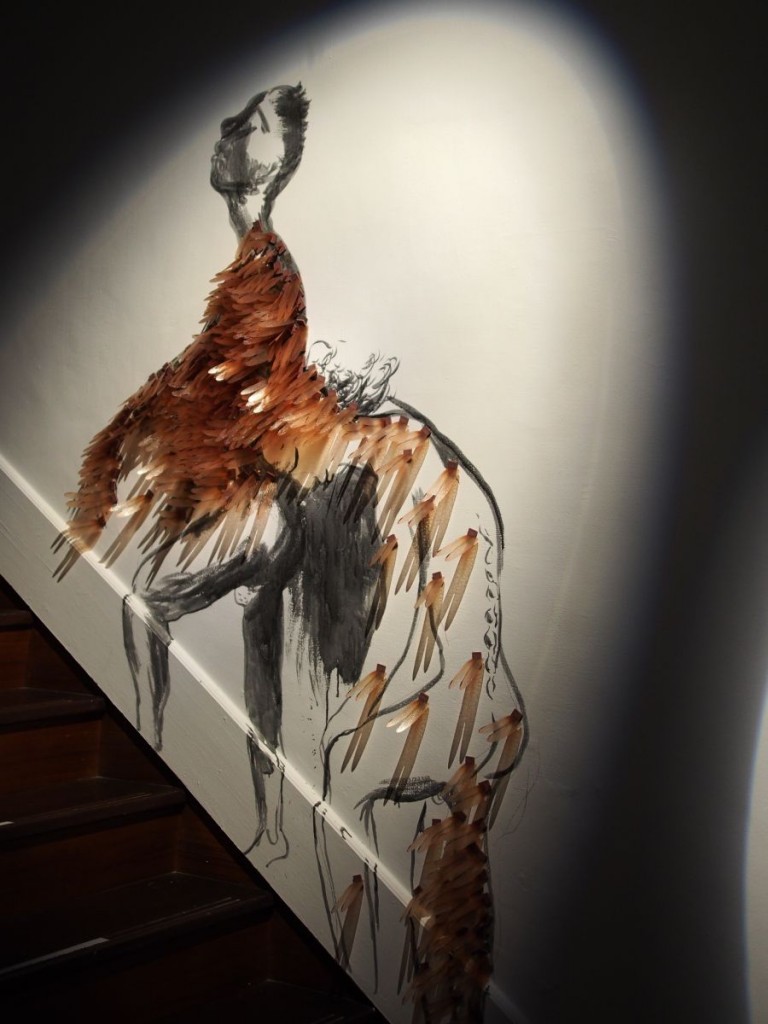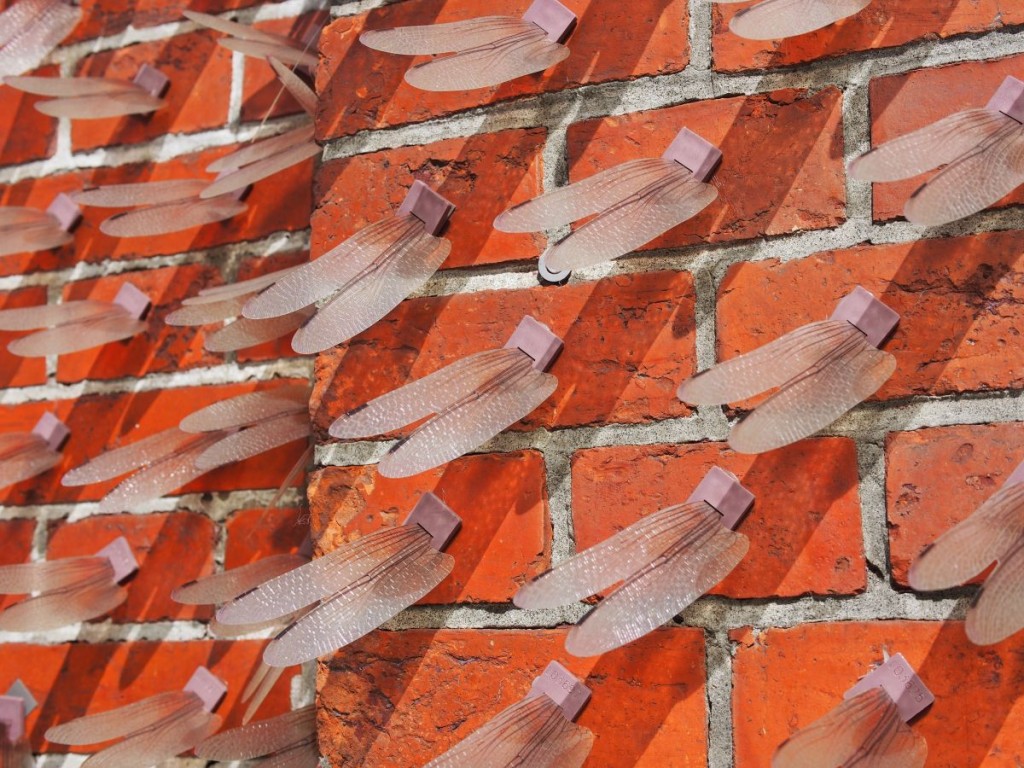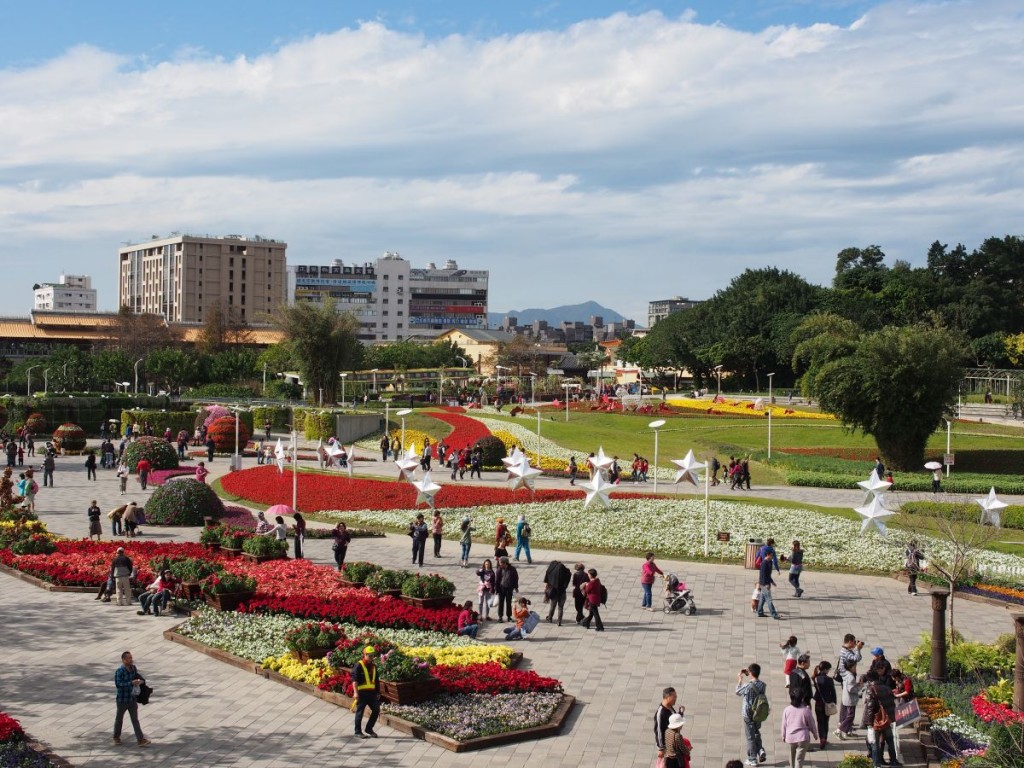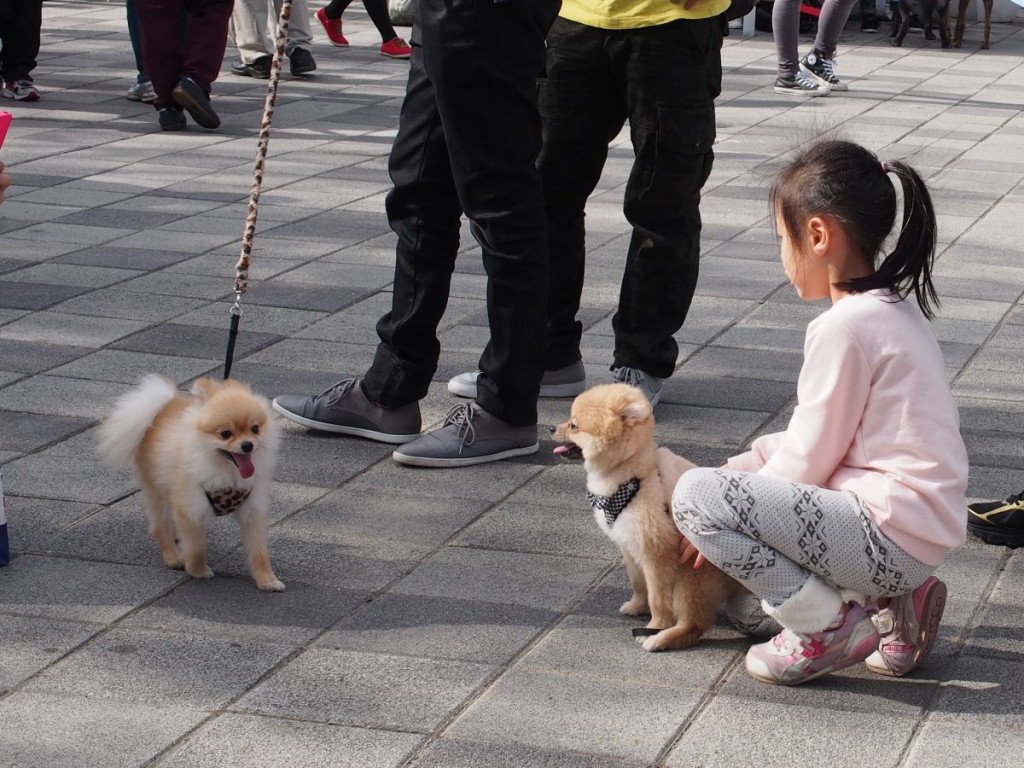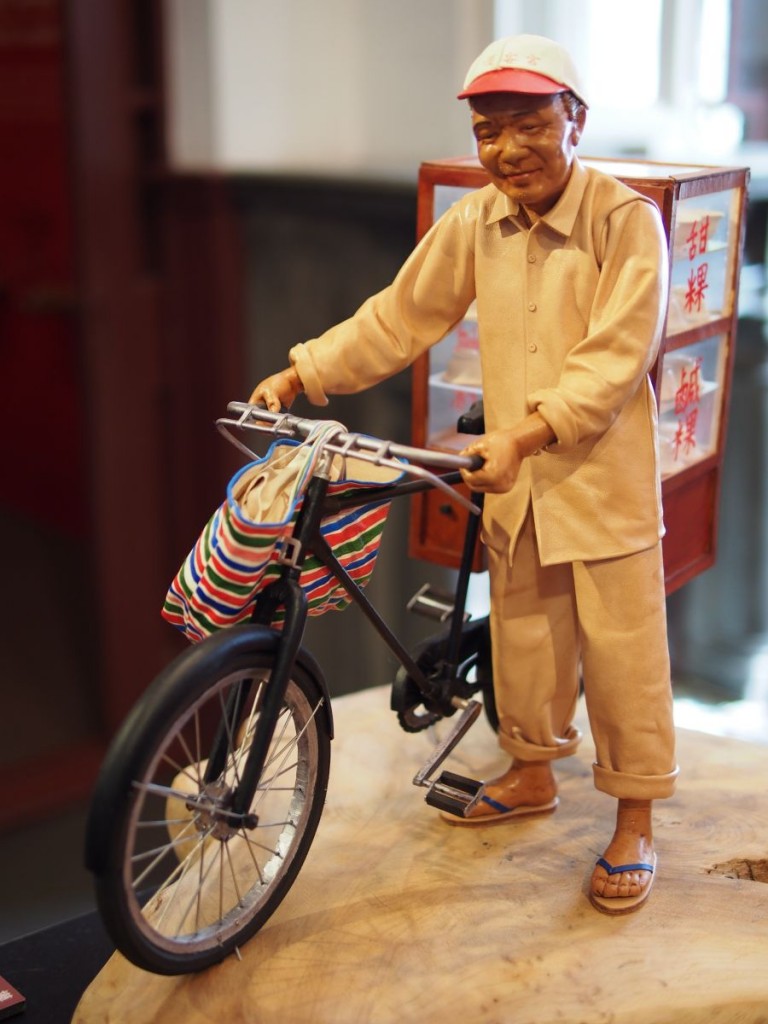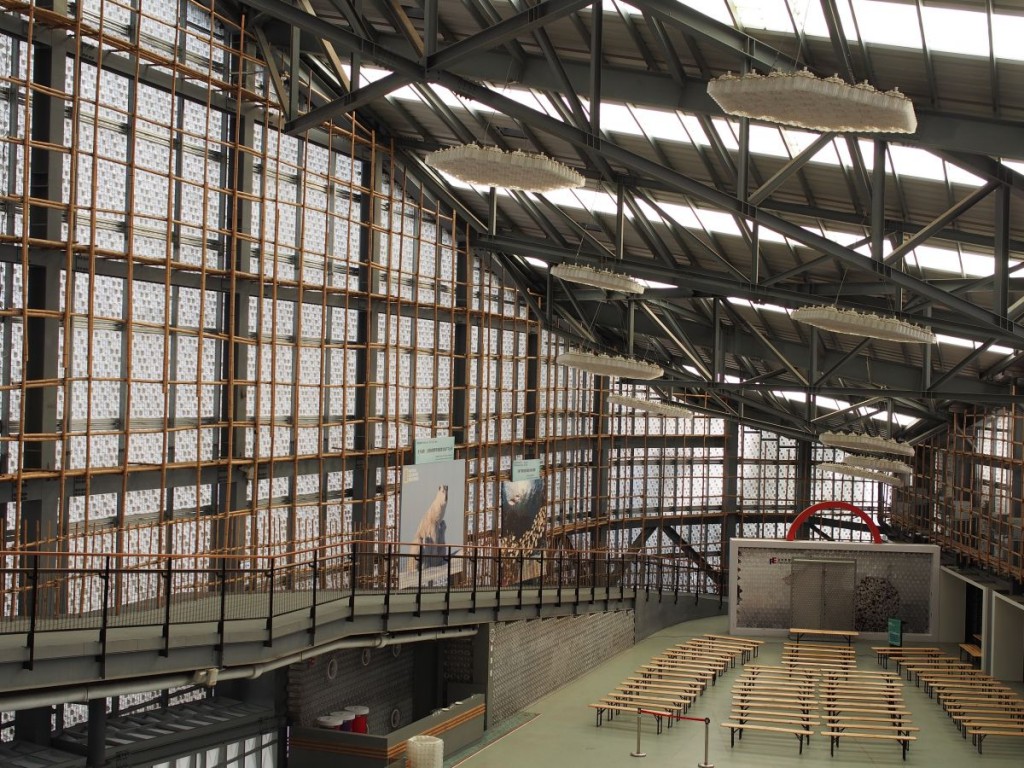Hitting the Museums – MOCA, TFAM, and Taipei Story House on a Sunny Day
Sunday December 30, 2012
8:30 a.m. at the 7-11 on Zhongshan Road in Taipei
The weather today is the type of weather that, in the end, can make Taiwan an unlivable place. Whatever I like about Taiwan, this cold, gloomy, drizzly weather is the killer. I’ve been hoping to go off on a week-long scooter trip for many months now, but the plans never work out. And Chinese New Year is coming up – an opportunity to go on an adventure, but I know the weather is going to be like this. On the bright side, I’m not sweating and overheating. That is the alternative type of weather for Taiwan.
I did do the rounds of the museums yesterday – two of them anyway. I went to MOCA first. I’d already seen the main exhibit once before, but at NT$50 it’s a no-brainer to wander through it again. An amusing side to these museum visits is the presence of all the volunteers and employees. At MOCA and at TFAM (Taipei Museum of Fine Arts), they have young people sitting in chairs or just standing around inside all of the exhibits. Their main role, of course, is to stop people from touching the exhibits or getting too close to them. They have nothing to do with me, but I can’t help but have this intense relationship with them. For one thing, they’re just sitting there and I feel this intense pressure to acknowledge their presence with a smile. I feel like a fool when I do smile and nod at them in a friendly way. And I feel rude when I don’t. I also feel like they’re in a position to judge me in some way. Did I spend enough time admiring this or that painting? If I just glanced at it and moved on, was I betraying how uncultured I am? If I stand and admire some piece that they think is not true art, am I betraying my own pretentiousness? It’s worse when I return to an exhibit a second time, as I often do. My first time through, I go quite slowly and even if I don’t particularly like the art on display, I’ll take it all in. I’ll often sit down on whatever benches they provide. I may not be admiring the art, but it’s a nice chance to rest and relax. On my second time through, I’m going much faster and I can’t be bothered to dawdle in a room with pieces that didn’t interest me. I might just walk through a room and exit out the other side in a second or two, and then I think that the volunteer sitting there would be offended. I feel like I should stop and explain to all the volunteers that this is my second visit and that’s why I’m moving so quickly. I don’t want them to be offended.
It’s even worse at TFAM, which is a much larger museum. These poor volunteers can get stuck in some room tucked far away into a corner that almost no one visits. I feel sorry for them and feel like I should have brought them some coffee. And when I’m there, I’m often the only visitor in sight. So this imaginary relationship with this volunteer is even stronger. To simply ignore them feels very rude. Yet, to greet them all is clearly silly. Since they sit there all day, I imagine they get used to being ignored. So perhaps if I do greet them, they will be annoyed. They’ve seen thousands of people move through, so I don’t need to greet them. In the end, it is an impossible relationship with no clear rules for how to behave.
The problems with second visits extend even to getting your ticket at MOCA. At MOCA they always make a special – and quite interesting – themed ticket. They are justifiably proud of them and enjoy the reaction of visitors when they see them. For this exhibit, the ticket looks like a dragonfly and has actual plastic dragonfly wings attached to it. On my first visit, I reacted in an appropriate way and oohed and aahed over it. These tickets are often numbered, too, and I had something like #8 – practically a collector’s edition. On this, my second visit, the clerk handed me my ticket with obvious pleasure. She even went so far as to say, “This is your ticket” and smiled at me – obviously expecting some kind of reaction. I didn’t have the energy to act surprised. Nor did I feel like explaining how I’d already been there and already knew about the special ticket and had already oohed and aahed over it. It’s tough having a social conscience…
After MOCA, I hopped onto the MRT and went up to Yuanshan station to drop by TFAM. I knew the main exhibits hadn’t changed, but there was a new exhibit in the basement space, and I felt it was worth a visit. It was an exhibit of winners of some kind of annual art competition in Taipei – the best of the best of the past year kind of thing.
To get to TFAM from the MRT station, you have to walk through the Expo park. There is always something going on there and it is always fun. On this day, I was very pleased to see that they had the Taipei Dog Walk scheduled. I hadn’t heard of it before and I didn’t know what the point of it was, but it did mean that there were hundreds and hundreds of dogs there – all shapes and sizes and breeds. Thinking back, I do see that there was a pattern there. Every dog I saw was a purebred of some kind. Each one was a type. That reflects how this dog thing is so new in Taiwan. It only occurs to people to get a “brand” of dog, like picking out the newest and latest iPhone. Out of the hundreds of dogs there, I don’t think I saw one basic dog – a mutt. I don’t even know the names of the breeds, but all the popular ones in Taiwan were represented. There were the brown toy poodles, of which one sees so many in Taiwan. I’ve come to like those dogs a lot. There were lots of Yorkshire Terriers and Pomeranians and other toy dogs. It was interesting to see them all interacting – especially when you get four or five of the exact same breed meeting. The owners would let them move close and smell each other all over and look on proudly and fondly. I did see a few more exotic breeds. There was an Afghan hound, for example, but I saw only one. There were a few huskies.
There were tents set up for all the various animal rights groups in Taiwan. Animals Taiwan was there and apparently still going strong
Before I went to TFAM, I popped into the Taipei Story House. There is a new exhibit there called Sweets about the history of candy and traditional snacks in Taiwan. When I bought my ticket, I ran into a similar problem to the one at MOCA. The woman in the ticket booth was very eager and wanted to give me all kinds of brochures about the history of Taipei Story House and tell me all about it. Again, I had a choice. I could pretend that I had never been there before and give her the pleasure of telling me all about it. But that’s a lot of work. This time, I told her that I had already seen their brochures and that I had been to Story House before. She asked me which exhibit I had seen, and I told her that I had seen all of them. She said “Thank you, thank you, thank you!” as if I had personally done her a great service.
The exhibit was very interesting and quite well done. The quality of their exhibits always surprises me. And I love that house. Going up and down the staircases, I run my hands over the thick wooden railings. I feel like I am inside an old farmhouse in Canada.
At TFAM, I didn’t buy a ticket for the main exhibit. Instead, I went straight to the basement to buy a piece of cheesecake. It’s one of my museum-visiting pleasures. Then I went to the basement exhibit. I love that space in the basement. It’s a huge space with high ceilings and even merges with the massive loading docks for the trucks that bring things in and out of the museum.
The exhibit itself was a pleasant surprise in that I recognized a number of the pieces. These were, after all, the winners from the past year, and I had come across the art in various venues over the past 12 months. Many were new to me, though, and I enjoyed wandering through them. My favorite was a playful exhibit that focused on the TFAM building itself. Apparently, this 30-year-old building is showing its age and leaks a great deal. This artist decided to poke some fun at the museum and put together an exhibit giving the museum some ideas for how to deal with the leaks. So there were dozens and dozens of brightly-colored plastic buckets everywhere with plastic tarpaulin covering works of art. There were big piles of museum furniture sitting on buckets to keep it out of the puddles on the floor. It was art in only the loosest definition of that word, but it was amusing.
Next to the bucket display, my favorite piece was another large installation. It featured an actual live bird – the species name escapes me, but it was one of those intelligent black birds that can mimic human speech. The bird sat in a cage in the middle of the room and was clearly the subject of some kind of a (fake) experiment. Huge old-fashioned black speakers sat on poles around the bird in a ring and a set of amplifiers and other equipment broadcast simple phrases in English and Chinese at the bird at random – presumably in an effort to get the bird to learn them. The setting was very clinical and white and cold, which contrasted greatly with the very vocal and vibrant and organic bird at the center of it all. My first thought, of course, was “Poor bird.” I wondered if it was cold or lonely or unhappy in this white room all by itself with these speakers muttering at it. That’s kind of nonsense, though. The bird was clearly as happy as can be. And I’m sure whoever organized this thing monitored it carefully and this bird was quite fussed over and all that. Certainly, I see birds in cages all over Taipei in extremely bad conditions. This bird at the museum was living the life of Riley by comparison. And who knows what makes a bird happy?
I was surprised that this installation was as open as it was. It was possible to walk right into the room, step over all the cables on the floor, and walk right up to the bird’s cage. I kept my distance, though, because I didn’t want to panic the volunteer sitting nearby outside the room. You could see that this volunteer was straining to the breaking point to catch people messing around with the bird. Of course, I’m not an idiot and I’m not about to go up to the cage and stick my fingers through the bars and talk to the bird or otherwise misbehave. But the volunteer doesn’t know that, and I could sense her tension level rise as I went into the room. She shifted in her chair – trying to be unobtrusive about it – so that she could keep me in view and make sure that I didn’t do anything bad. This exhibit was particularly challenging for the volunteers because, to my surprise, there were no lines on the floor. There was no barrier at all, and it was possible to go right into the room and walk around all the speakers and cables and the recording equipment and to walk right up to the bird cage. It seemed weird to me, and I looked around for a long time looking for signs or barriers or lines before I moved any closer. In the end, I stayed outside the circle of speakers and never went near the cage and the bird. I did not want to freak out the volunteer or the bird, and I didn’t want to risk stepping over all the cables. I could see getting tangled up in them and bringing down the speakers with a crash. From that point of view and considering the “safety safety safety” culture we all live in these days, I was surprised the exhibit was so open.
After my visit to TFAM, I went for a stroll around the Expo area. I was just enjoying the rare sunshine and snapping a picture here and there. I hung out for a little while until I could shoot a short video clip of a jet flying directly overhead on its way to the Taipei City Airport. I noticed that the Eco Ark building was open and I went inside to take a look around. It had never been open before on any of my visits to the park. There wasn’t much going on inside, but it was interesting to see the interior. I had no idea what was inside the building before.
After my small adventures of the day, I had one small interesting experience at night. On impulse, I looked for any videos on YouTube for learning Tagalog – the language of the Philippines. There were a few scattered about of course, and I worked through a couple of them. It was quite fun. It was also very encouraging and showed me that if I wanted to learn Tagolog, it would not be terribly, terribly hard. Tagolog uses the same alphabet as English, of course, and that makes a huge difference. Plus it is not a tonal language. And from what I could tell, it was fairly straightforward. All the letters are pronounced and they are pronounced in very logical and clear ways. It sounded very pleasant and normal to my ears. On top of that, it was fun to see bits of Spanish pop up here and there. I was amused, for example, to see that the Tagolog for the phrase “Of course” was spelled and pronounced almost exactly like the Spanish word siempre. I believe the Tagolog had a ‘y’ instead of an ‘I’ or something like that. It seemed a very pleasant and fun language. If I had half a brain, I’d devote some time over the next two months to learning some basic survival Tagaolog for my trip. I even remember some of the words from my brief exposure last night. The word for tomorrow, for example, is bukas – prounced “boo kass”. How simple and easy is that? I also learned that the massive number of “a”s in Tagalog is not that mysterious. On my recent trips to the Philippines, I saw so many signs with words that had double a’s. That seemed strange. But according to the videos I watched, it’s quite simple. You actually pronounce all the a’s in every word. When you see two a’s in a row, you actually say “a a” – two clear and separate a’s. Simple.
Tags: Animals Taiwan, MOCA, museum, Taipei Story House, Taiwan, TFAM

